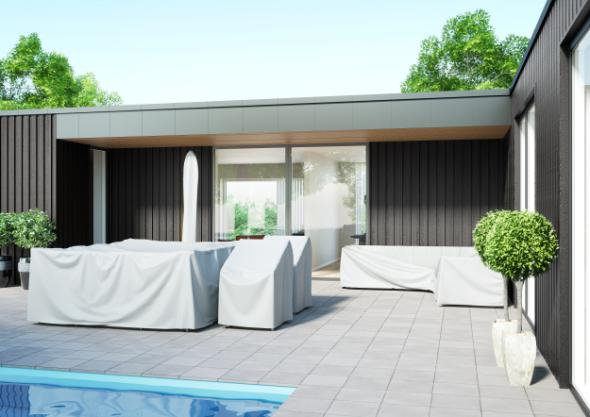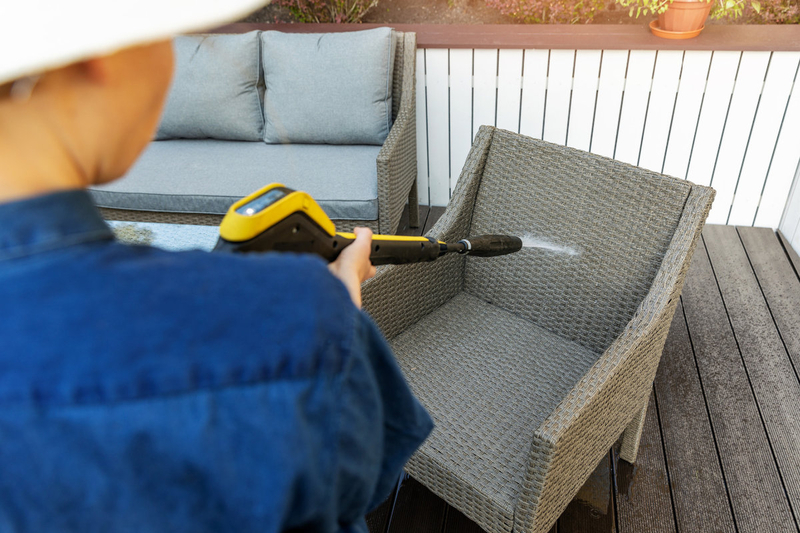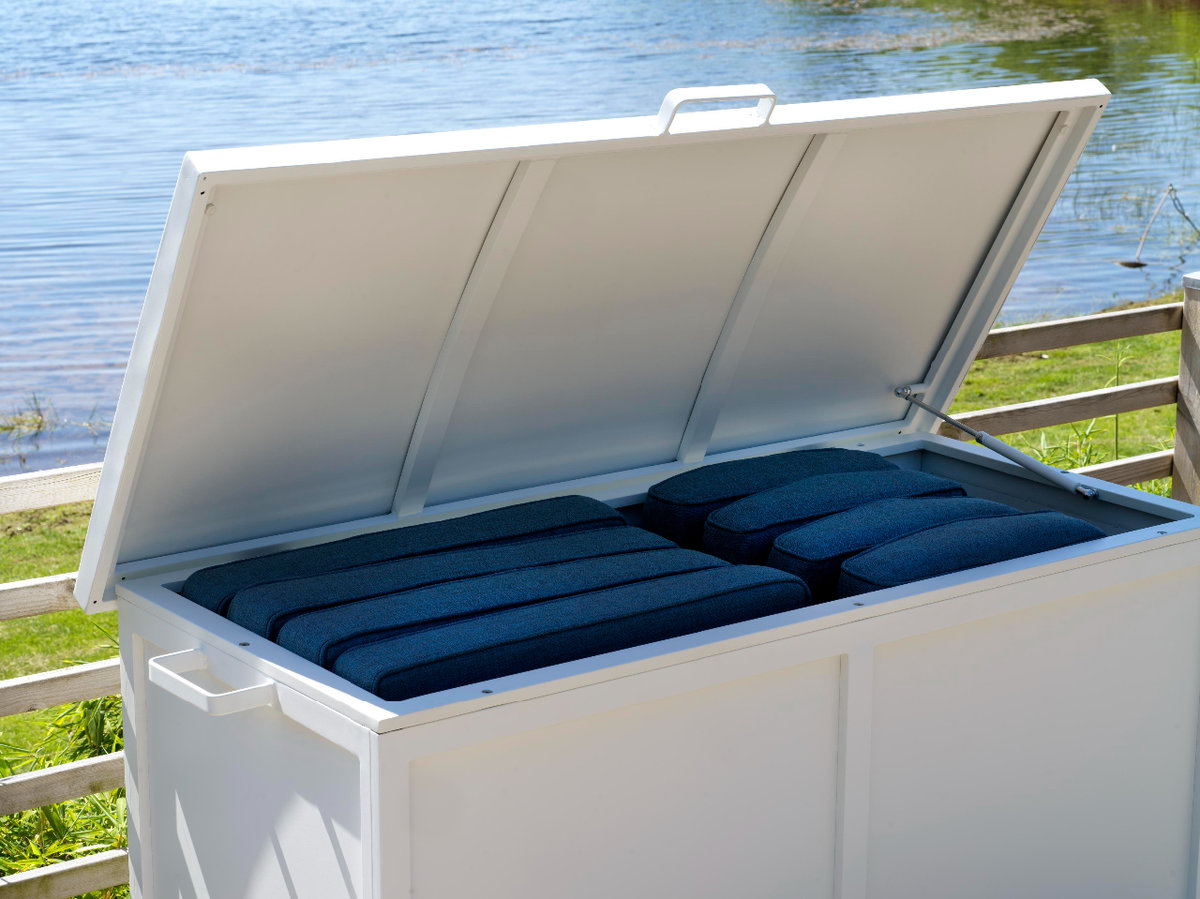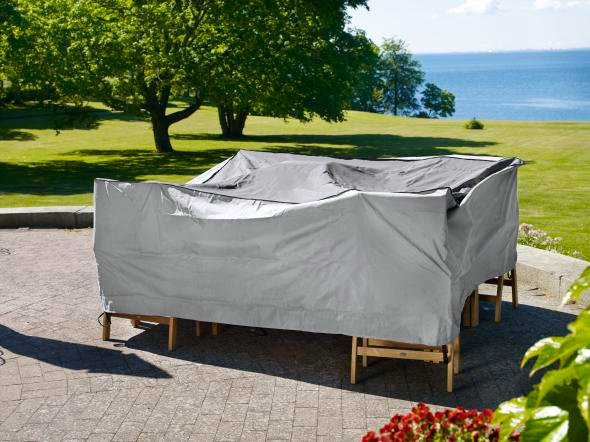
We collect basic website visitor information on this website and store it in cookies. We also utilize Google Analytics to track page view information to assist us in improving our website.

Living in the beautiful country of Canada we are lucky enough to experience the ever-changing seasons. These changes certainly keep us busy preparing for each one individually so we can fully enjoy the benefits of each season! As we start our preparations for winter our thoughts turn towards storing our patio furniture and how best to protect our investment. We have put together some helpful information and tips on how best to store your patio furniture over the winter months so it will be ready to use when the seasons change again!
Buying outdoor furniture can often be a relatively big investment and with both the budget and environment in mind it’s important that your furniture lasts for many years. Taking the time to take care of your outdoor furniture will lengthen the life of your furniture. If you keep your outdoor furniture clean, store it indoors in the winter and maintain routine maintenance you will have your furniture for years to come!

To help best protect our patio furniture, it helps to understand how the winter weather damages it. The main component is moisture. Moisture will get into cracks and even fine pores of the furniture freeze and then expand causing sometimes irreversible damage to the furniture. Also, moisture if left on the furniture before covering it for the winter months will lead to mold and mildew again causing damage to the furniture.
Snow is another factor to consider when storing your patio furniture. Snow is heavy! It may look light and fluffy when it is falling from the sky but when it accumulates snow is dense and heavy. This weight will cause your furniture to warp or break under the pressure.
One of the first things to consider is whether you would like to store your furniture indoors or leave the furniture outdoors with covers for protection. There are many different options for storage, a corner in your garage or basement is a great option. No extra space available? Try storage rentals, there are many different places that offer protected, dry areas to store your items for a rental fee. These fees vary and it is best to call around to get the best price. If you do choose to pursue the storage route, it is still recommended to cover your patio furniture with tarps or fitted covers to protect the furniture from dust and animals.
If you choose to leave your patio on the deck with covers, it is best to invest in a high-quality cover. There are many different things to consider when purchasing an outdoor cover for your furniture, the first being size. To find out what size of cover you require you must first find the dimensions of your patio furniture.
Sofas and chairs – To obtain the dimensions of your sofas and chairs measure the height from the ground to the top of the chair back this will give you the height. Next, determine the length (which is also called the depth of the furniture) by measuring the distance from the front to the back of the piece of furniture. You also require a measurement of the width, this is determined by measuring your piece of furniture side-to-side. The last measurement that you require is the arm height which is the found by measuring from the ground to the top of the arm rest.
Dining Sets – To obtain the dimensions of your outdoor dining set first measure the height of your dining chair by measuring the distance from the ground to the top of the back of the dining chair. Next, place all of the dining chairs around your table pushing them up to the table. Determine the length and width of the dining set when all pushed together by measuring from chair backs opposite each other. If your table is round you need only to measure the diameter of the set.
Now that you have the size of the cover your need, it is time to consider the material of the cover. Covers are generally made of polyester and vinyl or a combination of the two. Polyester alone is water resistant and will allow moisture to penetrate the fabric in hard soaking rains or if snow is left on the cover over time and “melts” through the fabric. If you are thinking of purchasing a polyester cover for outdoors consider polyester reinforced by waterproof PVC. PVC is essentially a thin layer of plastic with a fabric covering making it waterproof.
Cottage Culture has a variety of different sizes and shapes of covers available for your patio furniture. Whether you require a cover for a single chair, dining set or large patio grouping Cottage Culture has you covered! (pun intended) Call or stop in and ask our knowledgeable staff for assistance in choosing the perfect cover for your patio furniture.

With the size and type of material decided now it is time for the manual labor! Your outdoor furniture must be cleaned before you put it away for the season. Depending on the material of outdoor furniture this can be done in different ways:
Wicker- Vacuum your wicker furniture removing all the dust and dirt. Next, wipe down the furniture with a rag and soapy water. We recommend using Dawn dish soap as we find this best remove dirt and any oily grime that may be on your furniture. After going over your wicker piece of furniture with a rag use an old toothbrush to reach in the crevasses of the wicker making sure to get in all of those tight spaces! Now the hard part is done, just let your wicker furniture completely dry before covering or storing it. Any amount of moisture left on the furniture will promote mold and mildew growth.
Wood – Wood is the most vulnerable material as it naturally contains moisture. Just using a cover will not protect your wood furniture as wood continually draws moisture from the air. After cleaning your wood furniture, it is recommended to use a sealant that has moisture-resistant characteristics. Again, make sure your wood furniture is completely dry before covering or storing.
Teak – Storing teak furniture is different than storing wood furniture as teak naturally contains components to prevent mold and mildew. Teak will naturally patina to a grey colour. If you are wishing to maintain the honey-brown colour of new teak you will need to seal your teak furniture. We recommend to use a marine-grade sealer. Always apply the sealer on clean, dry teak. Depending on how dry your climate is the sealer will need to be reapplied every 6-12 months. For some great tips on maintaining teak furniture visit https://teakwarehouse.com/care/a-grade-teak-furniture-care/.
Plastic – Plastic has no issues with moisture. The most harmful winter element to plastic furniture are the cold temperatures. Cold weather will make plastic brittle over time allowing the plastic to crack. To give your plastic furniture longevity it is recommended to bring it indoors over the winter months. If you choose to leave your plastic furniture outdoors and your outdoor furniture is stackable, place the covered stack of furniture in an area that will not easily be bumped or hit.
Metal – Metal furniture is heavy and bulky making it hard to move therefore it is usually stored outdoors for the winter. Before covering your metal furniture for the winter be sure to give the furniture a thorough wash with soapy water followed by a scrub with a brush and quick rinse. Once the furniture is cleaned inspect it for any signs of rust. If you find any troublesome areas treat them with a rust-neutralizing primer. Although not required, it is recommended to apply a coat of wax to your metal furniture for added protection against the winter elements before covering it for the winter.

Outdoor cushions need to be stored away for the winter as well. The main winter determent to outdoor cushions are rodents. Wherever you choose to store your outdoor cushions be sure to take into account these pesky creatures. Consider placing a few Bounce dryer sheets amongst your cushions as the smell will deter the rodents. The first step in preparing your patio cushions for winter storage is to give them a good look over and spot clean any areas of concern with hot soapy water (again we recommend Dawn dish soap for best results) followed by a quick rinse as not to leave any soap on the cushions. Once your outdoor cushions are 100% dry they can easily be stored indoors in Rubbermaid containers or outdoors in a storage box. The Grasse storage box is large enough to fit all of your cushions keeping them all in one place! When you are looking for storage containers look for ones made of aluminum which is a rust-free material and will not leave marks on your cushions.

The most important tip is to make sure your outdoor furniture is completely dry before covering it up and storing it for the winter months. Wood furniture in particular must be dry and treated with a sealant to prevent mold and mildew.
It is best to prevent the cover from resting against flat surfaces of your furniture, such as table tops. Place a bucket or similar sized object on the table before placing the cover over top, this allows ventilation.
Furniture in any material can theoretically be kept outside, even in the winter, bit its lifespan will be much shorter. Snow, ice, cold and moisture wear on furniture and shorten its lifespan.
When you are cleaning your outdoor furniture prior to putting it away for the season take the short bit of extra time to give the piece of furniture a “once over.” Are there any screws missing or that might need to be tightened? Check metal furniture for signs of rust. If you see any signs of mold or mildew while cleaning treat them with bleach just be careful not to get it on your clothes!
While it may take a day or two to properly winterize and store your patio furniture for the winter, trust me it is worth taking the time. Keeping your outdoor furniture clean and regular maintenance will prolong the life of your furniture and your investment. These few steps will give you peace of mind over the long winter months when the snow and wind are howling that your furniture is safe and will be ready for you when the warm weather comes again!